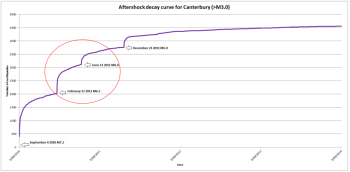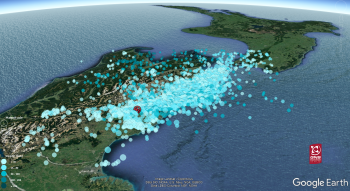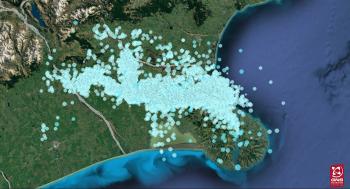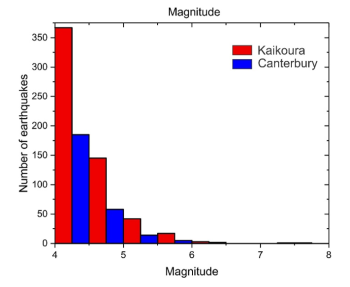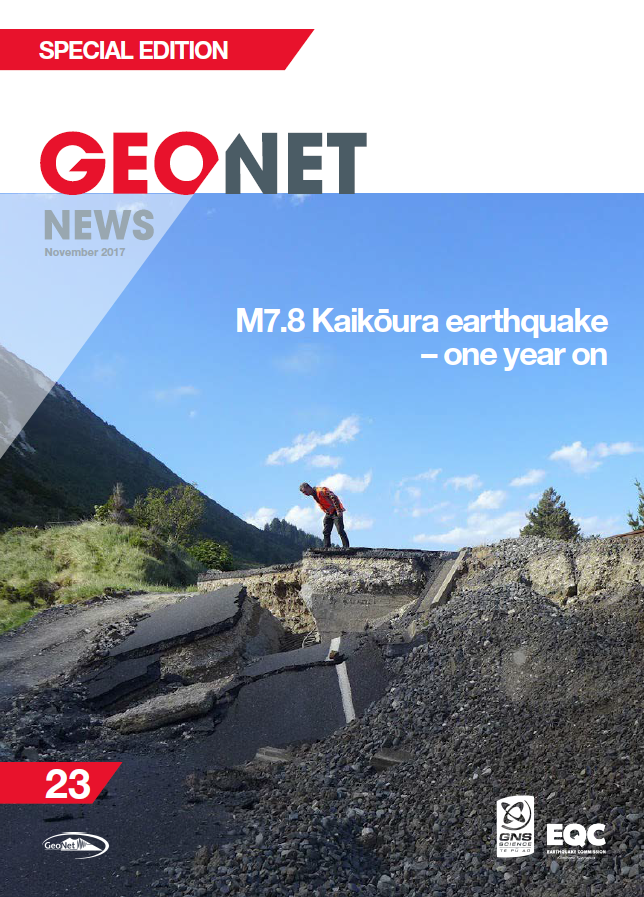National Advisory: Tsunami activity – expect strong and unusual currents and unpredictable surges at the shore following the M8.8 earthquake, Kamchatka Russia. For all information please visit NEMA (The National Emergency Management Agency) Only messages issued by NEMA represent the official warning status for New Zealand.

A year on, how is the Kaikōura aftershock sequence playing out compared to Darfield?
Updated: Wed Nov 22 2017 12:00 AM
Following Tuesday’s one year anniversary of the M7.8 Kaikōura earthquake, our scientists have a few observations about how the aftershock behaviour of the M7.8 Kaikōura and the 2010 M7.1 Darfield (Canterbury) earthquakes compare.
One observation is that the Kaikōura earthquake has not yet triggered the reinvigoration of the earthquake sequence that was experienced in the first year of the Canterbury earthquake sequence. The M7.1 Darfield earthquake, on 4 September 2010, triggered two M≥6.0 earthquakes within the first year; a M6.2 on 22 February 2011 and a M6.0 on 13 June 2011.
Although our scientists never expect a perfectly smooth decay curve, where the magnitude and frequency of aftershocks lessen with time, in the Canterbury sequence, there have been periods of months between the aftershocks and they occurred at distances beyond the original fault area (outside of the expected aftershock zone). The red circle in the image below shows the two spikes in activity from the February and June aftershocks.
At the time this raised the question - are late and large aftershocks usual or unusual? This is part of on-going research to better understand aftersock behaviour after large earthquakes.
All the seismic activity in the aftershock area of November 2016’s Kaikōura earthquake is decreasing and the expected numbers of earthquakes continue to drop, however our forecasts tell us that late moderate to large earthquakes are still possible for Kaikōura. There is a 19% chance of one or more M6.0-6.9 earthquakes occurring within the next three months (see our earthquake forecasts here).
Unlike the Canterbury earthquake sequence, all the larger aftershocks in the Kaikōura aftershock sequence to date occurred in the first 24 hours following the main shock at 12.02 AM. There were two M6.2 aftershocks (12.32 AM and 12.52 AM) and the largest aftershock, a M6.3, occurred at 1.34 PM. Overall the Kaikōura aftershocks have been much more clustered in time around the main shock.
Another observation of aftershock behaviour is that the number of Kaikōura aftershocks has been on the lower side of the average expected range.
Our earthquake catalogues show that there have been more than 20,200 M1 and above aftershocks since the Kaikōura earthquake (we ran the numbers on the 13th of November 2017). Of these, 574 have been a M4 and above (see map below of all the aftershocks) and 63 have been a M5 or above. On average, in the first year after a M7.8 earthquake we would expect about 1,800 M4 and above aftershocks.
Looking at Canterbury a year on from the Darfield earthquake, there were more than 9,232 (above M1) earthquakes and 264 aftershocks M4 or above (see map above of all the aftershocks). Twenty two earthquakes were M5 or above. This is also slightly fewer than we would expect for an average New Zealand aftershock sequence following a M7.1 earthquake. On average, we would expect around 340 M4 and above aftershocks in the first 365 days (see table for comparison).
Both Darfield and Kaikōura have been long-lived and complex earthquake sequences with ongoing earthquakes – we know that New Zealanders have been significantly impacted by our seismically active country. On that note, the social side of a disaster is as important to us as the data we produce and we hope we are contributing to a more informed New Zealand.
If you haven’t already - look at the Geonet News: Kaikōura edition for science updates.
We can’t stop earthquakes from happening BUT we can prepare for them. Want to know how? Here are some great places to go to get more information about New Zealand and preparing for earthquakes: - Get Ready Get Thru - Ministry of Civil Defence and Emergency Management - EQC - Nationwide Emergency Mobile Alerts
Science input recieved from Matt Gerstenberger, Annemarie Christophersen and John Ristau from GNS Science
